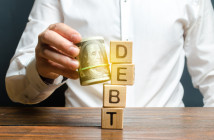If there’s one thing any Australian can do to ensure they enjoy a comfortable retirement, it’s this simple tip.
Max Phelps, author of Getting Your Money $hit Together, owns 16 investment properties and was able to retire from full-time work at age 46, but he doesn’t own the house he lives in.
“The rental yield on the property I’m living in is less than two per cent,” he explains. “I don’t see why I’d want to have that much cash tied up in a property when the yield on it is two per cent.”
While the financial planner and mortgage broker admits he is “biased towards property,” as an investment strategy, he says one of the biggest misconceptions about getting into the property market is that you have to buy where you want to live.
“If you can afford to buy something to live in, great,” he says, “but if you can’t, buy somewhere else that you can afford. That way, with inflation and rents going up all the time, at least your tenants’ rent will be going up in line with your own.”
His advice to young people to focus on buying at least one property comes from an understanding of the Australian Pension Scheme which, he says, is just not set up for people who don’t already have somewhere to live.
“The assumption is that we have a home either that we bought and paid off ourselves, or that we’re in Housing Commission,” he explains.
“The system is absolutely not designed for people renting in retirement. So fundamentally, what we need to be doing is making sure that we’re not. And that means either buying a home that we can live in and pay off during our working lives, or buying another property that we can rent out and pay off during our working lives, so that we can either live in it when we retire, or we can collect rent on it to cover any rent that we’re paying ourselves.”
The unholy trinity of rising interest rates, a looming recession and a cost-of-living crisis that saw self-funded retirees paying 7.6 per cent more for basic items over the past 12 months alone has many Aussies spooked about life in the twilight years. And while Mr. Phelps believes property is an excellent investment vehicle for a comfortable retirement, he says the key to retiring rich is actually far simpler.
“The number one thing, I’d say, is that you need to save 20 per cent of your income,” he states.
“If you go back to the Bible, it’ll tell you to put aside one fifth of everything you earn. I’m not religious, but there’s a 4000-year-old-book where they’ve figured it out.”
“The way to save 20 per cent of your income in this modern, mostly cashless world,” he continues, “is to completely separate out where you’re spending money from where you’re earning money, which is a complete paradigm shift for most people.”
“Most people assume you open up a bank account where your pay lands, then you spend money from that account. And a lot of financial gurus will say ‘pay yourself first’, and what they mean is put a fixed amount of money into a savings account, but the problem is that’s fundamentally the wrong way around.”
Phelps says switching the process and having your salary paid into a savings account first, things become much simpler.
“If you start from the principle of ‘I earn money, and that goes into a space where I limit my own personal access, because I don’t trust myself’, then give yourself a fixed spending allowance, you will get used to spending that fixed spending allowance even as your income grows,” he says.
But amassing the savings is only half of the process, he explains, adding that what you then do with that money is what builds wealth.
Phelps says compound interest – the process of earning interest both on the money you’ve saved or invested, as well as on the interest you’ve earned – is key.
“If you put $100 a month aside from your 20s through to your 60s, you’d have a million dollars in your bank account by the time you hit retirement, but if you wait until your 30s to start, then by putting the exact same amount in every month, but missing that first 10 years, you’ll have $300,000 instead of a million dollars. So it’s those first 10 years that are the most important in terms of building for retirement.”
David Bassanese, chief economist at Betashares, agrees.
“No less than Albert Einstein once said ‘Compound interest is the eighth wonder of the world. He who understands it, earns it; he who doesn’t, pays it’. The best way to visualise compound interest is likely a snowball rolling down a hill,” he explains. “Although it starts off small and collects only a little bit of extra snow each time it rolls, the effect builds up over time and you are left with a pretty big snowball at the bottom of the hill.”
He adds that by reinvesting investment returns, you add a little bit of capital to your investment nest egg each year, which in turn means you earn even more the following year – which can be added again to capital once again.
“Even small sacrifices in terms of reinvesting returns can accumulate to large returns down the track due to the effect of compounding,” he says.
Phelps says that while his advice might not be the get-rich-quick solution that many are looking for, it’s nevertheless the most sound advice when it comes to making sure Aussies are protected into their retirement.
“The advice is fundamentally the same,” he says, “but it’s just that the earlier you start, the better.”
“Building up savings your entire life is the best thing that you’ll ever do. And the advice that we always give is if you could save 20 per cent of every dollar that you earn your entire working life, then wherever you put that money, you will be miles better off than the average person who saves around 5 per cent of their income.”



